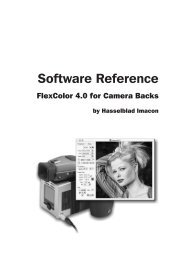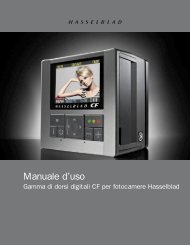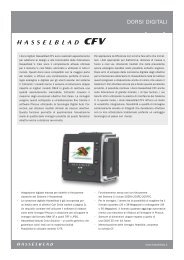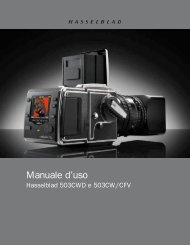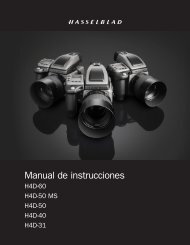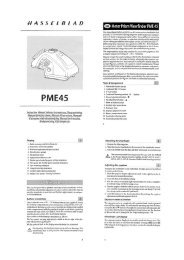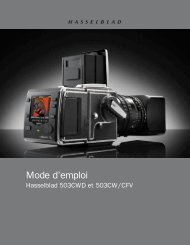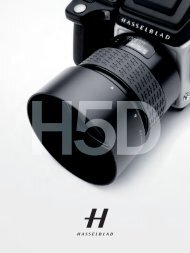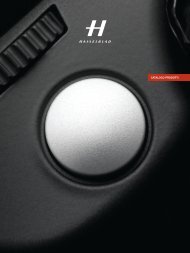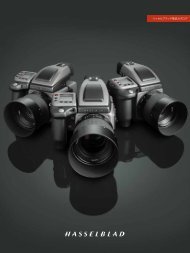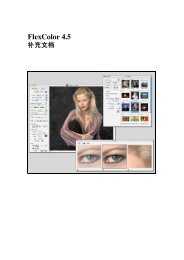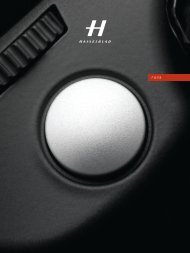User Manual - Hasselblad.jp
User Manual - Hasselblad.jp
User Manual - Hasselblad.jp
You also want an ePaper? Increase the reach of your titles
YUMPU automatically turns print PDFs into web optimized ePapers that Google loves.
Storage & Shooting<br />
Image storage modes / shooting<br />
The digital capture unit can store captured images in three ways:<br />
1. Untethered / Compact flash card mode<br />
In this mode the 503CW/503CWD and CFVII act independently of other connections.<br />
Images are stored on the internal, removable compact-flash card.<br />
• The main advantage with this mode is the freedom of cables and extra<br />
equipment.<br />
• The main disadvantages with this mode in the field are the battery power capacity<br />
and the size of the card’s holding capacity.<br />
Please note that the recommended types of CF cards are Sandisk Extreme-III or Lexar<br />
Professional 133x. Other cards will work but offer a reduced capture rate.<br />
2. Semi-tethered / ImageBank-II mode<br />
This mode enables you to attach the camera to a portable <strong>Hasselblad</strong> ImageBank-II via<br />
a FireWire cable. The ImageBank-II features massive storage capacity and high-speed<br />
data transfer. It is small, lightweight, battery powered and easily clips to your belt, so the<br />
solution is just as portable as the untethered option.<br />
• The main advantage with this mode is the great number of images that can be<br />
stored without a pause.<br />
• The main disadvantage with this mode is the extra equipment and cablage needed<br />
that might restrict mobility in some cases.<br />
3. Tethered / Studio mode<br />
This mode enables you to connect the 503CW/503CWD and CFVII directly to a computer<br />
and to operate the system using <strong>Hasselblad</strong> FlexColor or Phocus software and store<br />
images on a computer hard-disk.<br />
• The main advantages with this mode are the almost limitless storage capacity<br />
and being able to work on the images (with <strong>Hasselblad</strong> FlexColor or Phocus) on a<br />
large screen.<br />
• The main disadvantage with this mode is the lack of mobility to any great<br />
extent.<br />
Selecting the current medium<br />
A choice has to be made concerning where the captured images will initially be stored.<br />
The current storage medium is the location to which new shots are saved and from which<br />
you can browse using the navigation button. In many cases, the destination medium is<br />
selected automatically, for example:<br />
• When you are connected to a computer, then images are always saved directly to<br />
the computer hard disk.<br />
• When only one medium is connected (e.g., a compact-flash card), then this medium<br />
is automatically selected.<br />
However, if you are working away from your computer and have several media attached<br />
(e.g., both a card and an ImageBank-II, then you may need to select a medium explicitly<br />
if you want to browse its contents and store images new to it.<br />
27



